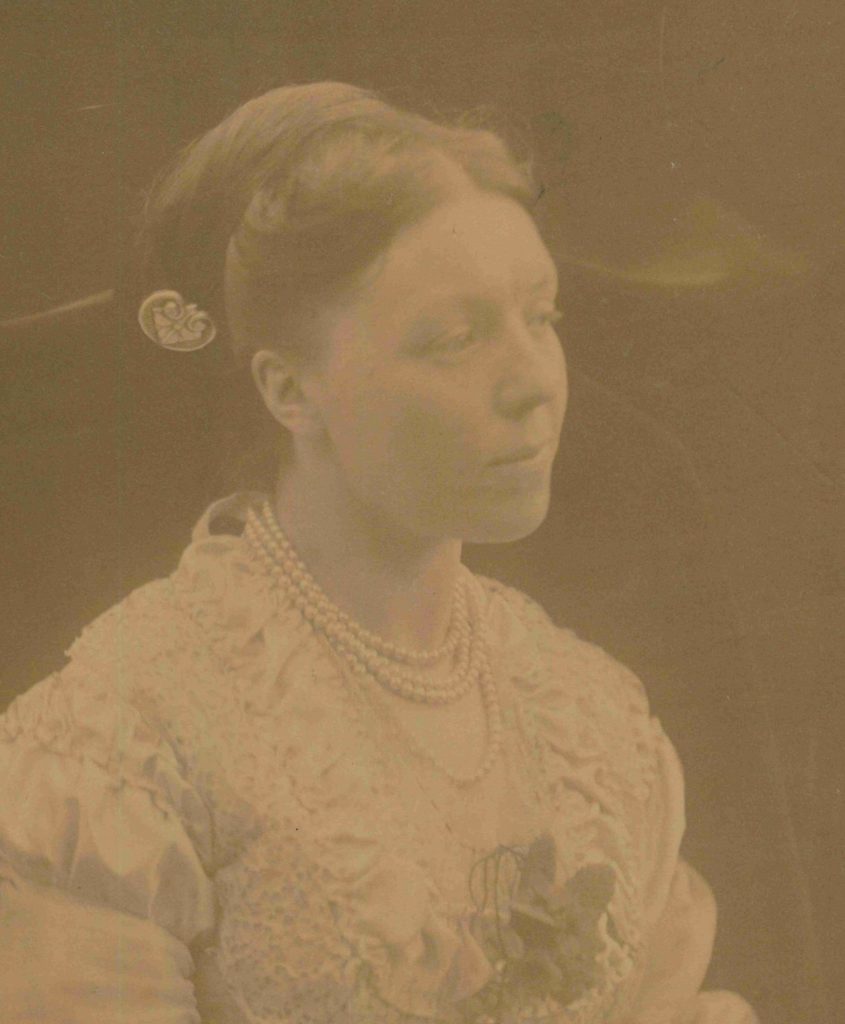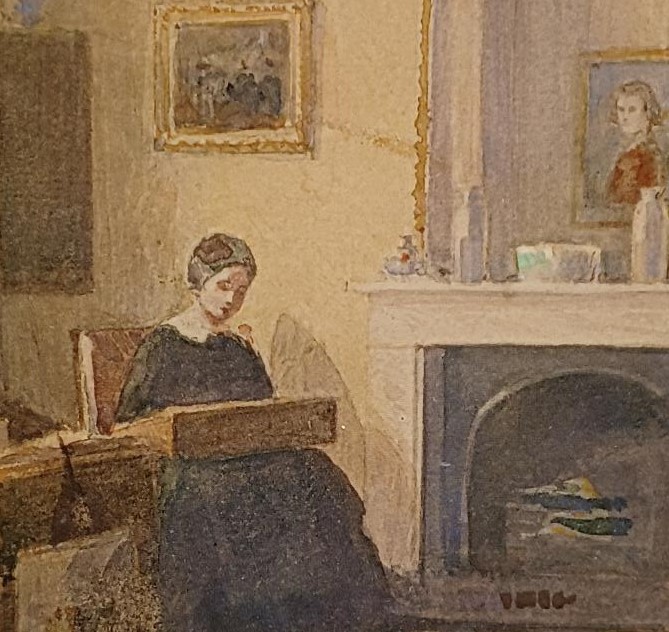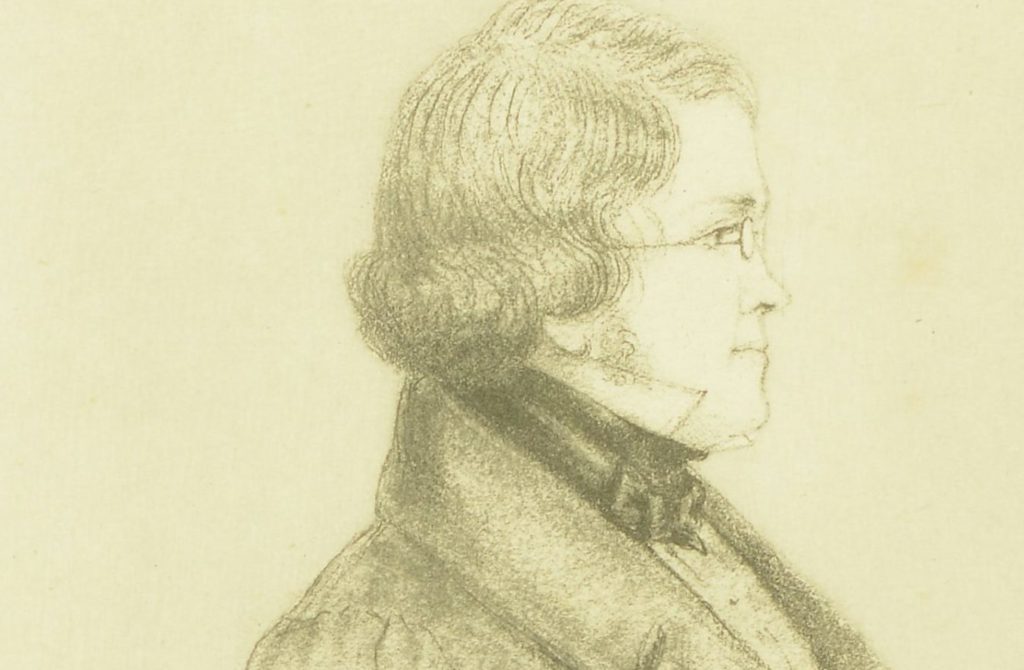
Anne Thackery Ritchie, as she is now usually known, was affectionally called Annie and would grow up to be a novelist and biographer
Image: Julia Margaret Cameron, photograph of Anne Thackeray(c.1870) Eton College Library MS 430 02 31
To understand her life, it is important to begin with her upbringing. After spending years with her younger sister Minnie under the care of their grandmother in Paris, the two girls returned to live with their father, their mother having suffered from severe post-natal depression, which required her to be cared for in various institutions and private households.
William Makepeace Thackeray encouraged his daughter in her own writings, which started out with short articles in the Cornhill Magazine.

As Annie grew older she started acting as her father’s amanuensis, his literary assistant
Image: Watercolour of Anne Thackeray by William Makepeace Thackeray(late 1850s) private collection
Her literary confidence grew and she was soon publishing novels, stepping out from her father’s shadow, she became a popular novelist and biographer.
Julia Margaret Cameron once commented that she saw many a passenger on a cruise with one of Annie’s books in hand and this is backed up by praise from within her high-profile contemporary circle, with George Eliot commenting that Annie’s novels were among the few she cared to read.
The death of her beloved sister Minnie in 1875 had put Annie’s life on hold. However, her unexpected marriage to her second cousin, Richmond Ritchie, two years later brought a new family stability with the birth of a two children.
She moved away from novels into biographical writings, however it was years before she felt able to turn her attention to writing about her father.
Anne Thackeray Ritchie died on 20 February 1919, having spent the final years of her life dedicated to preserving the legacy of her father. William Makepeace Thackeray is now predominantly remembered as the author of the popular Vanity Fair, but Annie’s own reputation was not to endure. Her novels slowly stopped being published and references to her in print largely remained the prerogative of her father’s biographers.

‘A Victorian Legacy’ is about more than just the literary legacy of a father and daughter. It is about their life, their society and their own attitudes to how they wanted to be remembered.
Image: Sketch of William Makepeace Thackeray,unidentified artist (1848) Eton College Library MS 430/02/30

